Motorola Droid X2 Review - A Droid X with Tegra 2
by Brian Klug on July 7, 2011 8:31 AM ESTLauncher and application switcher are next. There’s a bottom row of icons on the home screen that persist - this is essentially Motoblur’s riff on iOS’s dock, and it seems like a feature that every OEM UI skin implements. What’s curious is that the text underneath doesn’t show up on this row of icons, instead you’re supposed to know what each does just based on the icon.
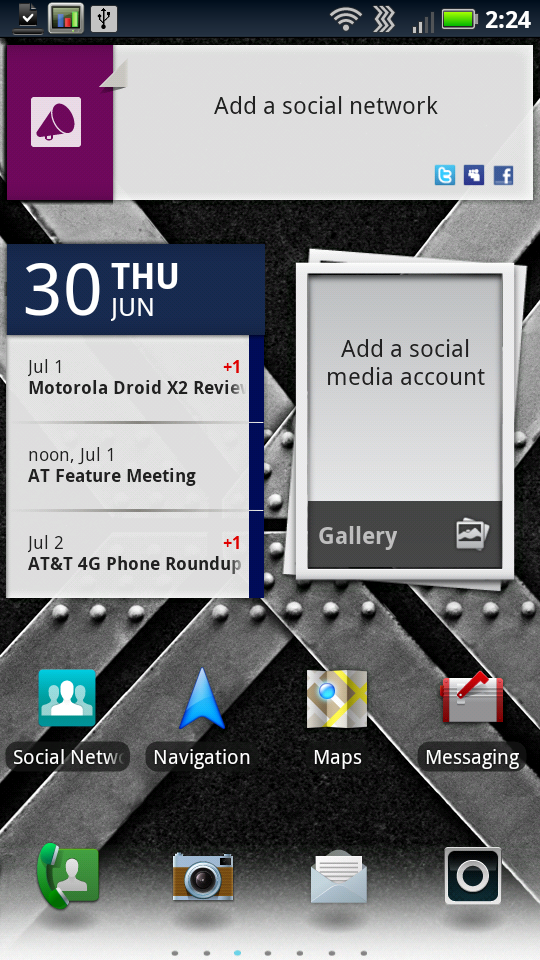
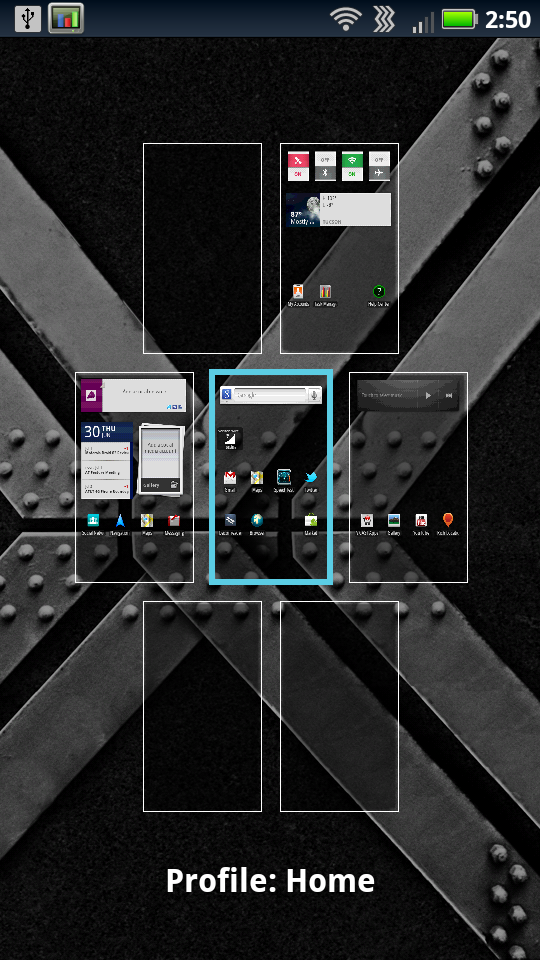
One thing that’s thankfully changed is the homescreen switcher. Previously, swiping from one homescreen to another would bring up a bottom panel with a bunch of dots. The problem was that this would sit there for a second or so and then go away, but often times after switching homescreens one would want to tap on the application launcher icon. It looked like this:
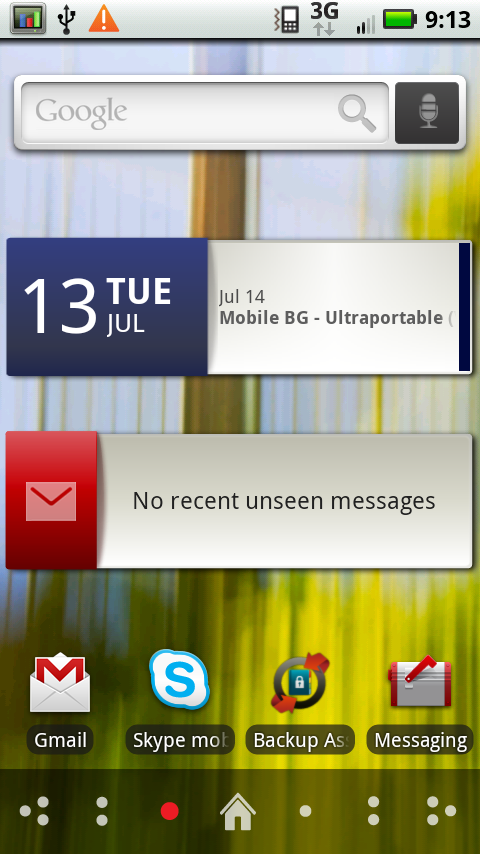
Thank goodness this is changed now. Instead, we get dots that turn blue depending on what homescreen is active, and no obscuration of that app launcher button. Thank goodness.
Hit the application launcher and you get a four icon wide grid of apps that scrolls up and down. This is pretty standard fare, and relatively smooth. Tapping on the top left corner brings up a menu that lets you switch the sorting from all, to recent, to downloaded. You can also optionally make your own and then add applications to it.
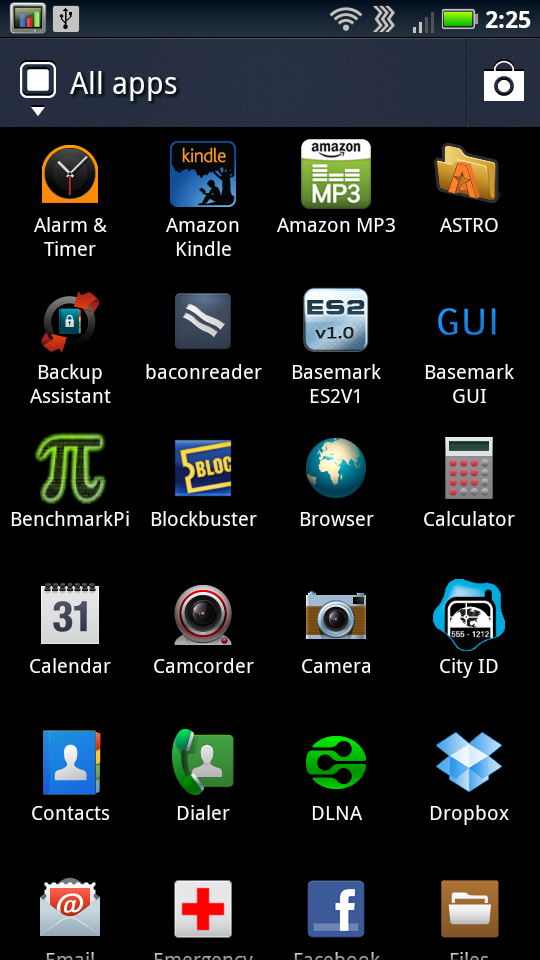
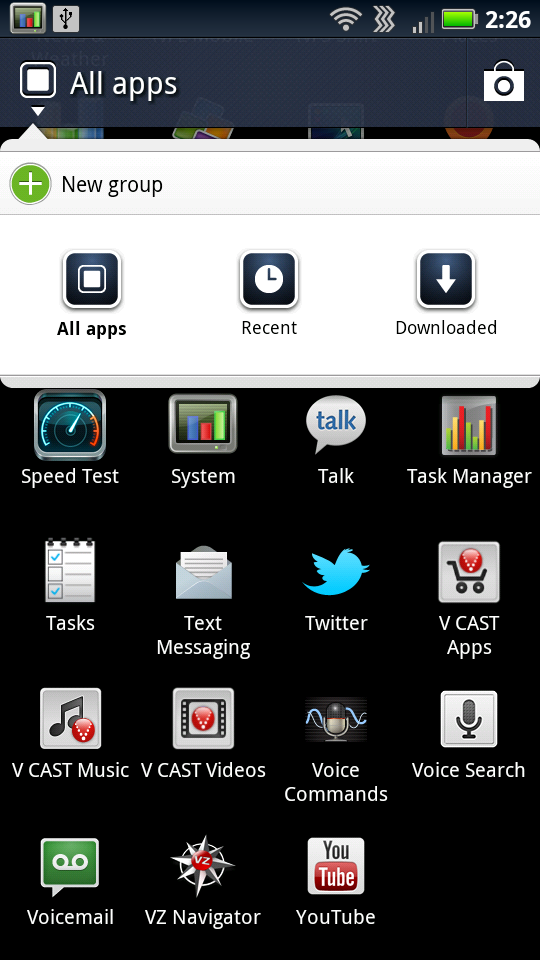
The application switcher (toggled by holding the home button) does a clever trick. Instead of bringing up a real switcher, it simply is a shortcut to the recent list of applications.
The final Motoblur customization is of course account management. Ideally, Motorola wants you to configure and log into all your social media accounts using their software, and then their widgets and special unified messaging application will populate accordingly. It’s great, and I’m sure it works for some people, but it still isn’t something for me. It’s better to just get the first party through each service’s respective application at this point.
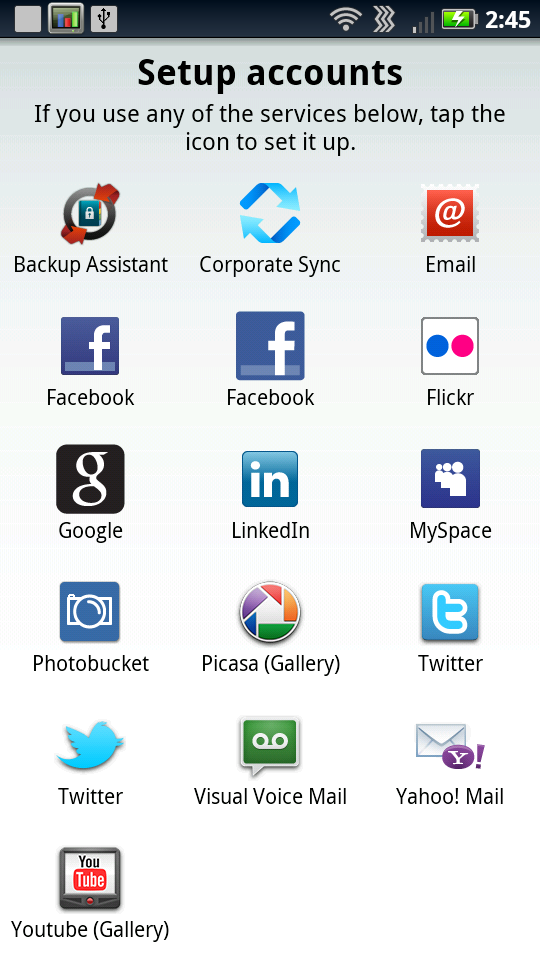
All of that basically sums up Motoblur, which superficially just makes Android look different. Love it or hate it, it’s still here and will likely stay around for some time. It made it onto Android 2.3 on the X, and will likely do the same with the X2. There’s no way to remove it either without flashing another ROM, and at this point the X2 still has a locked bootloader (no fastboot oem unlock, trust me, I tried), so if you want to be rid of it (or install a custom ROM) you could be waiting a while.
I should note that the X2 doesn't have the even newer version of Motoblur which we've seen running atop leaked photos of the Bionic or Droid 3 as of this writing. That hopefully will come at some point in the future - or maybe not in retrospect, depending on how you feel about that version of the UI skin.
Preloaded Bloat
The X2 also comes with a bunch of preloaded applications, but no more than I’ve become used to seeing on other devices in Verizon’s smartphone lineup. That includes Amazon MP3, Blockbuster, City ID, Lets Golf 2, NFL Mobile, NFS Shift, Slacker, and four Verizon applications.
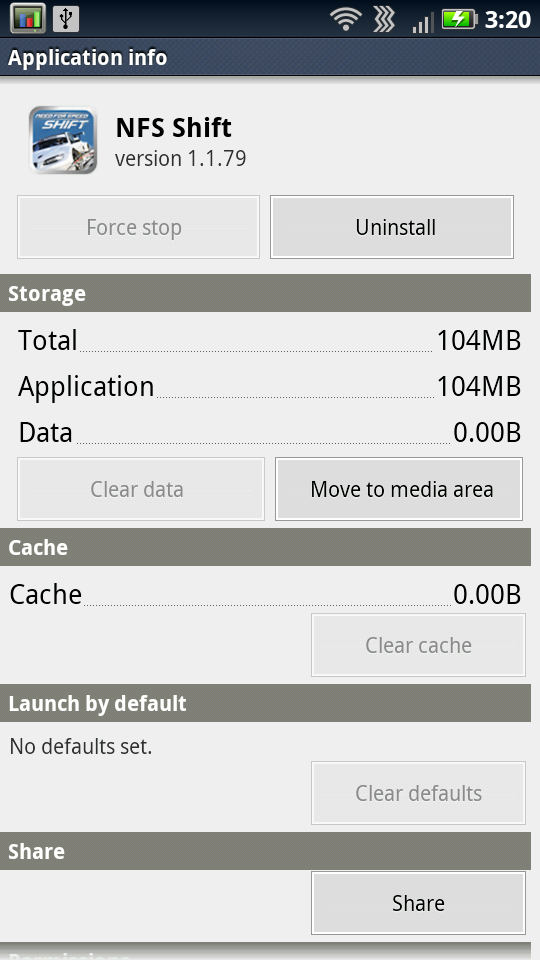

However, the good news is that you can finally uninstall some of this stuff. I successfully nuked Lets Golf, NFL Mobile, and NFS Shift. However, things like Blockbuster and the Verizon apps cannot be removed. Slowly but surely, we’re getting to the point where users can actually have some control over and remove carrier-preloaded garbage without needing root.










72 Comments
View All Comments
NeoteriX - Thursday, July 7, 2011 - link
Again, the N8 is an unfair comparison, it's not even the same class of camera phone. Just like the other examples I cited, the Sony C-902, Nokia N82... these are cameras that happen to also be phones. The problem is that these are not apples to apples comparisons.The sensor on the N8 is 1/1.83″ -- by way of comparison, the Canon S95, a real point and shoot camera with very well-respected low light performance relative to its peers has only a slightly larger sensor of 1/1.7" Not to mention it has carl zeiss branded optics and a xenon flash (like the other examples I cited)
The iPhone 4 uses a mobile camera sensor of 1/3.2" and so does the HTC sensation.
Now I'm all for big sensors in cameraphones--the better the image quality the better, as the best camera is ultimately the one you take with you. And the N8 shows that you can shove real point and shoot sensors into a phone, but let's face the reality -- the market of phones with REAL camera sensors and optics is a very, very, very small niche market (they cost $$$ to put in those sensors) and doesn't reflect the mass market of advanced smartphones.
Again, the iPhone 4 represents the best candidate of this balance, and I'm really hoping others HTC, Motorola, etc. step up their game here, but I don't plan on owning an Apple device in the near future.
munky - Thursday, July 7, 2011 - link
It's a valid comparison, the N8 is a smartphone like all the others you mentioned, in the same form factor. I'm not comparing something the size of a DSLR to something that fits in your pocket.Yes, it has a bigger sensor, just like the S95 has a bigger sensor than average pocket cameras - does that mean the S95 is not qualified to be the gold standard of pocket cameras? Doing so is just a refusal to acknowledge a superior product in favor of the lowest common denominator.
NeoteriX - Thursday, July 7, 2011 - link
I agree, but I think the distinguishing factor is that the S95 performs better than anything in its class by any dimension.The large sensor camera phones are still a "niche" in the sense that you have to singularly want exceptional photographic performance to buy one of these phones -- and in return, you have to make several compromises as to the user interface, CPU performance/technology, software ecosystem, etc. The phones are geared towards an audience willing to deal with that.
However, if you look at the other major powers in the phone OS ecosystems (iOS, Win7, Android, WebOS?), none incorporate the large sensor into any phone, much less the kind of flagship phone that you would expect them to pull all the stops out for.
Believe me when I say I would go out and immediately buy the first Android phone with all the furnishings -- dualcore CPU, etc. that *also* included a large sensor and quality glass.
Exodite - Thursday, July 7, 2011 - link
That's a bit of a red herring considering that the vast majority of these so-called 'camera phones' aren't lacking in other desirable features.Indeed, a good camera is becoming something of a hallmark of high-end smartphones in general, HTC being the exception to the rule.
As for the cost you mentioned before, the N8 - undeniably the best-equipped smartphone today when the camera is concerned - is a mid-range phone.
Brian Klug - Thursday, July 7, 2011 - link
I'm a huge optics nerd (it's what I studied in college at least) so I always try and find out everything I can about the cameras in here. Usually that ends up being very little because it either isn't documented, or there's no information in the place I look.For the sensor type, it's easy enough to just run dmesg and scan through there. HTC lately has been initializing the camera and leaving the part number right there. I searched through on the X2 and couldn't find any camera sensor part numbers even in the sections where they're clearly starting to init the camera. It's unfortunate, because otherwise we could get a better feel for what sensors are usually very good and which ones usually aren't.
It's interesting that Apple did such a good job marketing backside illumination with the iPhone 4, when essentially every sensor at or over 8 MP needs to be backside illuminated (and thinned) due to skew effects. That said their camera is indeed very good.
-Brian
jamyryals - Thursday, July 7, 2011 - link
Love the video review format. My favorite smart phone reviewer on the net, keep it up Brian.munky - Thursday, July 7, 2011 - link
Why do the graphs always compare the usual Samsung and Motorolla phones, the old practically irrelevant iphone 3gs, Nexus One and Dell Streak, but not more variety of modern phones, like the Nokia N8, for example? Instead of grouping tablets and phones in the same graphs, separate the two categories so that each one has a better selection of relevant entries.Exodite - Thursday, July 7, 2011 - link
Regarding Motorala and their use of FWVGA over WVGA, they're not the only Android handset manufacturer who went that route as Sony-Ericsson also uses FWVGA on the X10/arc/neo/play.BryanC - Thursday, July 7, 2011 - link
I might consider buying this phone if not for the terrible pentile screen door effect, which is simply unacceptable in today's day and age.The iPhone4 has 960x640x3 subpixels in 5.65in2 area. The Droid X2 has 960x540x2 subpixels in 7.90in2 area. The iPhone has 2.5X the subpixel density of the Droid X2! And it's immediately obvious when you look at the displays - the iPhone4 display is so detailed the image looks printed on, it's in a completely different class.
Too bad.
JayQ330 - Thursday, September 1, 2011 - link
what does that have to do with any of this? oh i see, wipe your chin there's still some iphone honey left.